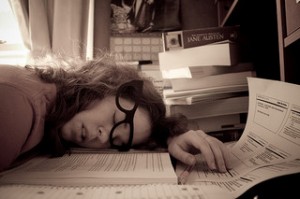How to keep your creative/problem-solving juices flowing
When you work in a home office you may experience “hitting the wall” at some point during the day, when you just can’t do anymore. You have run-dry. This can happen whether you are a creative or your work is data-driven. An article in Houzz listed eleven different tips on how to refill your creative well.
I have selected the six best and added a few ideas and tips of my own.

This is one of the subtle signs you need to replenish your creativity and inspiration.
1. “Know When You Work Best”
Everyone has their own circadian rhythm. Whether you wake with the birds or with the noon news, neuroscientists agreed that your brain is at its peak functioning when you first work up. Tackle your most challenging task then. Add some breakfast and your brain is fueled and rested for your toughest work. Naps can also be restorative and give you renewed brain energy for work – both creative and concentrative. Avoid falling for the myth of working during brain slump.
2. “Take a Creative Field Trip”
It would be nice if you could drop everything and go to Paris or Tahiti for inspiration. What may be more realistic is to include regular experiences at your local museum, historic site or concert venue. Give yourself experiences that stimulate your heart, your soul and your brain. These experiences don’t need to be hard or unpleasant. Simply do something new that you enjoy – often.
3. “Meet Up With A Friend”
Meet with a supportive business friend or colleague regularly. Find out what is going on in your field or in theirs. Meet for coffee and a chat, or a walk and a chat.
4. “Move Your Body”
If fitness alone does not inspire you to go to the gym, then knowing that moving your body oxygenates your brain will. Get yourself on that treadmill or weight machine. Take a brisk walk outside or hop on your exercise bike. Consider moving that exercise bike from your bedroom to your office, if it will help you use it more often.
5. “Make A Bridge To The Next Day”
Avoid blank page paralysis at the beginning of your next work day. As you are approaching the end of your workday review what you have done ( a great way to boost yourself and see what you have accomplished). Jot down ideas for the next step in your project. Review them at the beginning of your next day’s work. Then you will have a focused and connected start to your work.
6. “Know When To Stop Tinkering”
“Done is better than perfect”. This is a special challenge for creatives, as design/art school culture encourages/requires working on any project until the nano-second it must be handed-in. Which means long days and all-nighters; which means using an exhausted, less-functioning brain. Alan Weiss, internationally-recognized business consultant and author of over 40 books, states your first 80% of work contains your best ideas, the remaining 20% has little or no impact on your project. That last 20% is wasted time and energy with diminishing returns.
Creativity and data-focused problem-solving requires a brain that is refreshed, rested and inspired. Re-think how you structure your day. Build-in breaks for connection with others, exercise and different experiences. Support your brain and your whole being with variety and fun.
Learn more about how to keep your momentum going in your home office with insights on design, set-up and storage in my book The Smarter Home Office
Image by Jessica M Cross